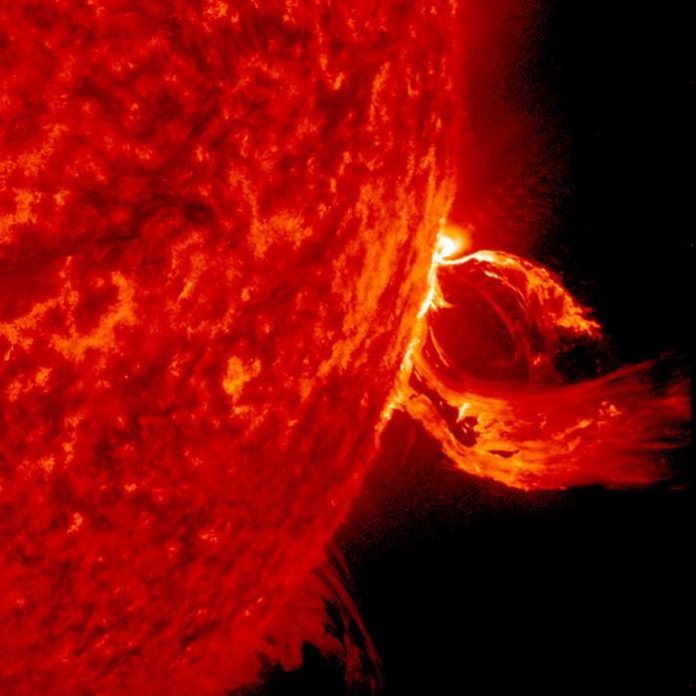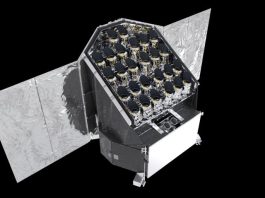Space storms could soon be forecasted with greater accuracy than ever before, thanks to a big leap forward in our understanding of exactly when a violent solar eruption may hit Earth.
Scientists say it is now possible to predict the precise speed a coronal mass ejection (CME) is travelling and when it will smash into our planet – even before it has fully erupted from the Sun.
CMEs can cause geomagnetic space storms that have the potential to wreak havoc with terrestrial technology in Earth’s orbit and on its surface, which is why experts worldwide are striving to improve space weather forecasts.
Advancements such as this one could make a huge difference in helping to protect infrastructure that is vital to our everyday lives, according to researchers at Aberystwyth University.
The researchers presented their findings at the Royal Astronomical Society’s National Astronomy Meeting in Hull.
Monitoring the Sun’s active regions
The researchers made their discovery after studying specific areas on the Sun called ‘active regions’, which have strong magnetic fields where CMEs are born.
They monitored how these areas changed before, during, and after space storms happened.
They examined the vital aspect of the ‘critical height’ of the active regions, which is the height at which the magnetic field becomes unstable and can lead to a CME.
“By measuring how the strength of the magnetic field decreases with height, we can determine this critical height,” said lead researcher Harshita Gandhi, a solar physicist at Aberystwyth University.
“This data can then be used along with a geometric model which is used to track the true speed of space storms in three dimensions, rather than just two, which is essential for precise predictions.”
She added: “Our findings reveal a strong relationship between the critical height at CME onset and the true CME speed.
“This insight allows us to predict the CME’s speed and, consequently, its arrival time on Earth, even before it has fully erupted.”
Protecting critical tech from space storms
When space storms hit Earth, they can trigger a geomagnetic storm that can produce stunning aurorae, often referred to in the northern hemisphere as the Northern Lights.
However, storms have the potential to disrupt vital systems we rely on daily, including satellites, power grids, and communication networks. This is why scientists worldwide are working hard to improve our ability to predict when CMEs will hit Earth.
This requires knowing a more accurate speed of the CME shortly after it erupts from the Sun to better provide advance warnings of when it will reach our planet.
Accurate speed predictions enable better estimates of when a CME will reach Earth, providing crucial advance warnings.
“Understanding and using the critical height in our forecasts improves our ability to warn about incoming space storms, helping to protect the technology that our modern lives depend on,” Gandhi said.
“Our research not only enhances our understanding of the Sun’s explosive behaviour but also significantly improves our ability to forecast space weather events.”









